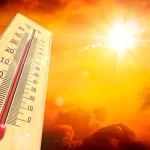Antelope Canyon is a slot canyon in the American Southwest. It is on Navajo land east of Page, Arizona. Antelope Canyon includes two separate, scenic slot canyon sections, referred to individually as “Upper Antelope Canyon” or “The Crack”; and “Lower Antelope Canyon” or “The Corkscrew”.
Upper Antelope Canyon is called Tsé bighánílíní, ‘the place where water runs through rocks’ by the Navajo. It is the most frequently visited by tourists for two reasons. First, its entrance and entire length are at ground level, requiring no climbing. Second, beams or shafts of direct sunlight radiating down from openings at the top of the canyon are much more common in Upper than in Lower. Beams occur most often in the summer months, as they require the sun to be high in the sky. Winter colors are more muted. Summer months provide two types of lighting. Light beams start to peek into the canyon March 20 and disappear October 7 each year.
Lower Antelope Canyon, is called Hazdistazí, or ‘spiral rock arches’ by the Navajo, is located several miles from Upper Antelope Canyon. Prior to the installation of metal stairways, visiting the canyon required climbing along pre-installed ladders in certain areas.
Even following the installation of stairways, it is a more difficult hike than Upper Antelope. It is longer, narrower in spots, and even footing is not available in all areas. Five flights of stairs of varying step widths are currently available to aid in descent and ascent. At the end, the climb out requires flights of stairs. Additionally, visitors should be aware of sand which consistently falls from the above crack as it can make the stairs particularly slippery.
Despite these limitations, Lower Antelope Canyon draws a considerable number of photographers, though casual sightseers are much less common there than in the Upper canyon. Specific photographer-only tours are available for booking around midday, when the beam of light is at its peak. Photographers are required to bring a tripod to participate.
The lower canyon is in the shape of a “V” and shallower than the Upper Antelope. Lighting is better in the early hours and late morning.
The Navajo name for Upper Antelope Canyon is Tsé bighánílíní, which means ‘the place where water runs through rocks’. Lower Antelope Canyon is Hazdistazí (called “Hasdestwazi” by the Navajo Parks and Recreation Department), or ‘spiral rock arches’. Both are in the LeChee Chapter of the Navajo Nation. The canyons are accessible by guided tour only.
Antelope Canyon is a popular location for photographers and sightseers, and a source of tourism business for the Navajo Nation. It has been accessible by tour only since 1997, when the Navajo Tribe made it a Navajo Tribal Park. All visits are through one of several licensed tour operators. It is not possible to visit the Canyon independently.
Photography within the canyons is difficult due to the wide range exposure range (often 10 EV or more) made by light reflecting off the canyon walls.
The road to upper Antelope Canyon is gated by the Navajo Nation and entry is restricted to guided tours led by authorized tour guides.
















More Stories
Prepare for extreme heat in Arizona
Emergency fosters needed for dogs before start of May 6 construction project
Natural Resources, Parks and Recreation launching pool rentals for 2024 swim season
$1M gift helps build equity for UArizona adaptive athletes
Construction Starts for Barrio Nopal Park
Immigration and Street Releases